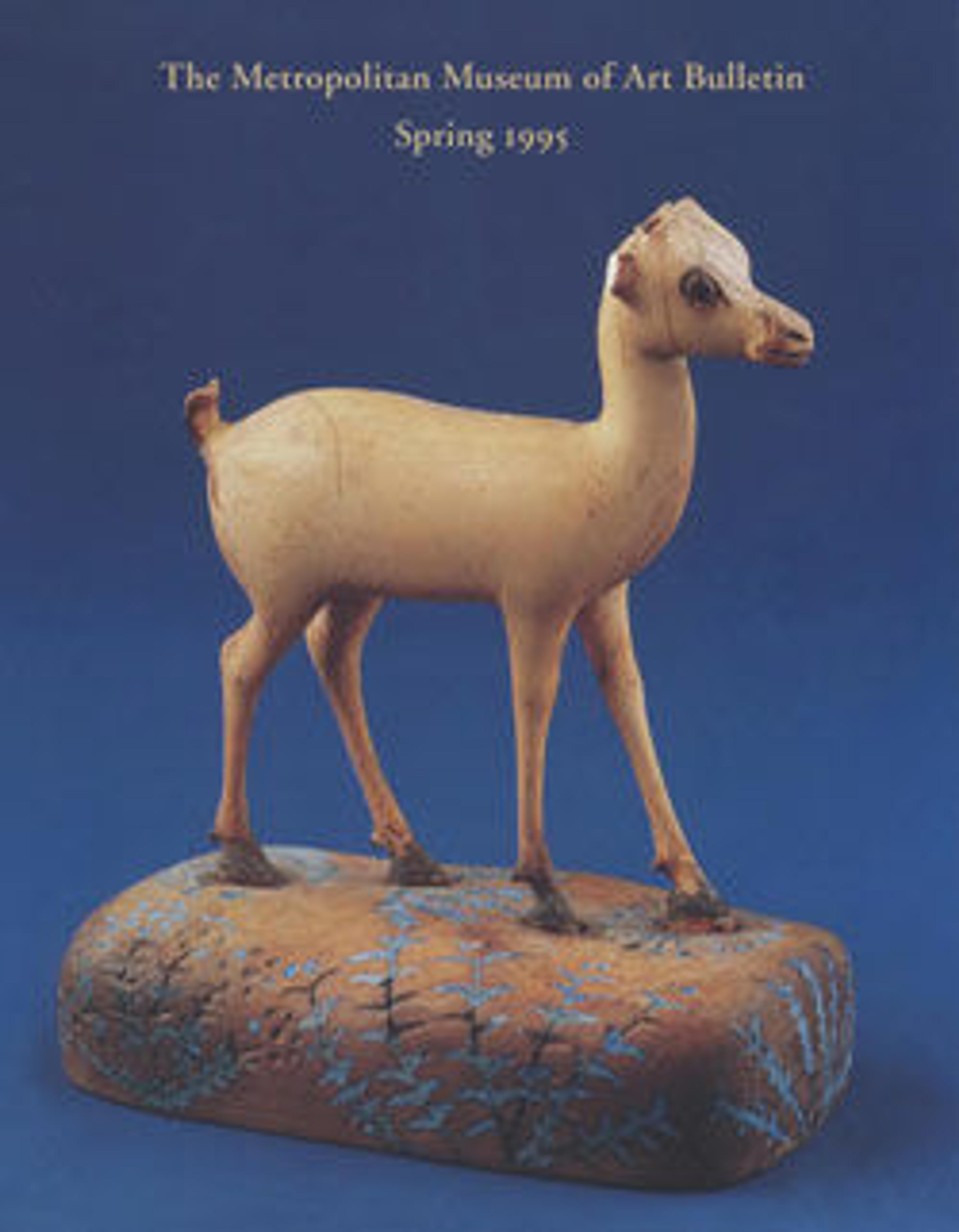Figure of a Shrew
"The voracious" was the ancient Egyptians'name for the shrew, an epithet that aptly describes the feeding habits of this tiny animal. In ancient Egyptian mythology the shrew was closely associated with the ichneumon. The shrew represented the blind aspect of a solar deity whose complement, endowed with keen eyesight, was understood to be the ichneumon.
Artwork Details
- Title: Figure of a Shrew
- Period: Ptolemaic Period
- Date: 304 B.C.–30 B.C.
- Geography: From Egypt
- Medium: Cupreous metal
- Dimensions: H. 3 cm (1 3/16 in.); W. 2.5 cm (1 in.); L. 9.6 cm (3 3/4 in.)
H. (with tang): 3.9 cm (1 9/16 in.) - Credit Line: Gift of Darius Ogden Mills, 1904
- Object Number: 04.2.465
- Curatorial Department: Egyptian Art
More Artwork
Research Resources
The Met provides unparalleled resources for research and welcomes an international community of students and scholars. The Met's Open Access API is where creators and researchers can connect to the The Met collection. Open Access data and public domain images are available for unrestricted commercial and noncommercial use without permission or fee.
To request images under copyright and other restrictions, please use this Image Request form.
Feedback
We continue to research and examine historical and cultural context for objects in The Met collection. If you have comments or questions about this object record, please contact us using the form below. The Museum looks forward to receiving your comments.
